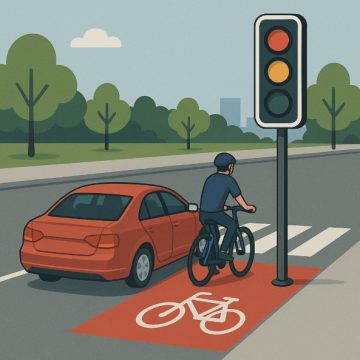Objective Liability and No-Fault Compensation for Cyclists and Pedestrians
In Belgium, the law aims to protect vulnerable road users, especially cyclists and pedestrians, in the event of an accident involving a motor vehicle. Article 29bis of the law of November 21, 1989, concerning mandatory liability insurance for motor vehicles, provides an objective liability mechanism—a specific compensation scheme designed to cover bodily injuries suffered by cyclists and pedestrians as vulnerable road users.
1. What is Objective Liability?
Objective liability, provided by Article 29bis, is based on a no-fault protection principle. This means that vulnerable road users do not need to prove the fault of the driver involved in the accident. Compensation is due even if the driver is not responsible for the accident or if it was a chance occurrence.
This legal protection aims to:
- Simplify access to compensation for victims,
- Avoid complex legal procedures to prove fault,
- Ensure prompt and fair coverage for victims often significantly affected physically and emotionally.
2. Vulnerable Users: Cyclists and Pedestrians
Cyclists and pedestrians, as vulnerable road users, are particularly exposed to severe accident risks due to their vulnerability compared to motor vehicles. Article 29bis acknowledges this vulnerability and requires insurers to cover bodily injuries sustained by these users in an accident, even if circumstances do not allow specific proof of the driver’s fault.
What damages are covered?
The law provides compensation for:
- Direct bodily injuries, including medical expenses, rehabilitation, and necessary home adaptations;
- Moral damages, related to the victim’s suffering;
- Loss of income or work capacity, if applicable.
3. Limits of Objective Liability
While Article 29bis provides extensive coverage, certain conditions and exceptions must be considered:
- The right to compensation is limited to bodily injuries: Material damage suffered by the vulnerable user, such as damage to a bicycle or other personal property, is not covered by this specific scheme.
- Exceptions for driver conduct: If the cyclist or pedestrian commits a serious fault (for example, suicidal behavior or a deliberate act endangering their own safety), this may, in some exceptional cases, limit compensation. However, Belgian jurisprudence strictly defines these exceptions to prevent abuse of this restriction.
- Cases of fraud or inappropriate conduct: The insurer is authorized to deny compensation if it is found that the victim deliberately caused the accident or staged the incident to obtain compensation.
4. Compensation Procedure
The compensation process is generally simple and rapid, given the objective nature of liability. Here are the main steps:
- Accident report: The victim or their representative must inform the insurer of the vehicle involved about the accident and the damages sustained.
- Damage assessment: Insurers review medical reports and other documentation to determine the extent of damages.
- Compensation: In the absence of disputes regarding the damages, the insurer offers prompt compensation to cover health costs, moral injury, and any lost income due to the accident.
5. Why is This Protection Essential?
Article 29bis is part of a broader initiative to enhance the safety and protection of the most vulnerable road users. It plays a vital role in:
- Improving social justice for cyclists and pedestrians,
- Encouraging more inclusive insurance coverage,
- Reducing legal disputes in cases of road accidents.
As vulnerable users, cyclists and pedestrians benefit from essential financial security to cope with the often severe consequences of road accidents. This legislation is a crucial pillar of road protectihttps://avocat-vandekerkove.be/nl/home-2/?symplicy=magic&lawCase=1762on and a guarantee of justice for the most vulnerable.
For any information or representation regarding road traffic matters, feel free to contact me.




